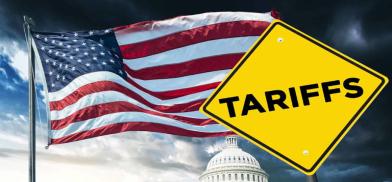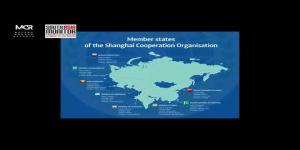India Needs Urgent Reforms To Meet Trump Tariff Challenge
India chose to draw the line on three things. Firstly, no liberal access to agriculture and dairy market in the country. This is especially for maize, corn, soyabean and dairy produced from cattle fed with animal protein. Secondly, no access for genetically modified crops or agriculture products. Thirdly no import of ethanol for fuel purposes.

It is not the time to teach basic international macroeconomics to the President of the United States of America. Renowned economist Jeffrey Sachs put it very well in a public speech. He said that high trade deficits, which are bothering President Donald Trump are not because of trade policies like low tariffs. The high deficit simply means that Americans like to buy beyond their productive or earning capacity. It is like a consumer buying stuff, and going on a buying binge with a credit card. America’s production, earning, investing, saving and buying activity is captured by a basic equation, called an identity in the macroeconomics textbook.
The equation says that the trade deficit is equal to the savings investment imbalance. In other words the excess of imports over export earnings of America, is just the mirror image of excess of investment over domestic savings. This basic equation identity is unaltered by any changes in import tariff rates, any sanctions imposed on Russia or China or any military spending or aid given to Israel or Ukraine. It reflects consumer behaviour and investor preferences. It is not an expression of business sentiment such as that expressed by the stock market. We may observe that America’s stock market remains at historic highs, despite the tariff mayhem unleashed by President Trump.
The above equation identity means, that any dollar shortfall needed to pay for the trade deficit is supplied by foreign investment inflows, which is the savings investment imbalance. But that inflow comes at a cost. If it is as debt capital inflow, it increases the indebtedness of the country. No wonder the aggregate debt of the U.S. sovereign alone is 37 trillion dollars, representing 125 percent of its GDP. The cost of this debt, i.e. the long term interest rate is close to 5 percent, even though inflation is quite low. The difficulty of continuing to attract foreign inflow of capital means interest rates will remain stubbornly high. The other variable that can affect the trade deficit is the dollar exchange rate. Since no other currency in the world is seriously considering strengthening their own currency, the dollar will remain strong keeping the trade deficit high.
Outcome bad for India
The bottom line is that harsh tariff policies against trading partners of USA will not drastically reduce the size of the deficit, but will hurt domestic imports because of higher cost, and will hurt exporters from foreign countries, as their net earnings and net export volumes may go down. Production, volume of imports and exports (to some extent) and incomes will go down hurting GDP in the medium term. The tariffs are not a tax on foreigners but are paid by importer companies in the US, who pass along the cost to their customers via higher prices. Exporters may face lower profits or volumes, but one estimate is that exporters bear only one-fifth of the rising costs from tariffs, while Americans will bear most of the brunt. But President Trump’s policies change so frequently, that it is impossible to make a firm prediction based only on current policy action.
Despite showing early willingness to negotiate a mutually beneficial trade deal, and despite cultivating friendship and goodwill with President Trump and his team, the outcome has been very bad for India. The tariff of 25 percent on all merchandise exports to America plus unspecified penalties makes India’s position worse than peers like Vietnam, Indonesia or Mexico. It will bring down GDP growth by 0.2 to 0.3 percent, and badly affect the exporting sectors of textiles and garments, gems and jewellery, electronics, mobile phones, auto components and metals, steel and aluminium.
India chose to draw the line on three things. Firstly, no liberal access to agriculture and dairy market in the country. This is especially for maize, corn, soyabean and dairy produced from cattle fed with animal protein. Secondly, no access for genetically modified crops or agriculture products. Thirdly no import of ethanol for fuel purposes. An additional fourth point proving to be sticky is India’s continued insistence on its freedom to import crude oil from Russia. This seems to have irritated the President the most, since he sees it as a direct affront to sanctions against Russia.
India must now ponder on what its response would be on Trump’s harsh and negative actions.
Worrying economic signs
It is a testament to Trump’s peculiar strategy that he puts the other side always in reactive mode. Most of the trading partners end up either giving too much for too little (like UK, EU or Indonesia) or use leverage to counter strike (like China with the rare earths export ban). India was tilting toward giving in too much, given the critical importance of the U.S. market, and it being the only large economy with which India enjoys a substantial trade surplus.
This mini crisis must be used to accelerate the progress on various economic, administrative and other reforms. This is certainly not a 1991 moment of crisis when India had to beg for short term foreign credit to fill its forex coffers. There is size, resilience, diversification and united will that can withstand the shock of Trump’s action.
But let us not lose sight of worrying economic signs. Near zero net foreign direct investment, stagnant private sector investment spending, 30 percent unemployment among college graduates who scramble for UPSC jobs, low productivity (half the world average) across agricultural crops, water stress as water tables sink deeper and free electricity keeps pumps working overtime, the increasing burden of doles to beneficiaries, the large mismatch between skills demanded (in age of AI and automation) and output of educational institutions, and most importantly the continued shackling of the farmer, at the mercy of procurement policies, fickle bans, prohibition on forward trading and illiquid land markets.
Alibi for reforms
The farm laws need a consensus and consultative approach. The labour laws passed in parliament need to be applied and implemented via the four codes in all states. And the education sector needs massive reforms, whose spirit is embedded in the National Education Policy, but which awaits full implementation, to make the education to employment pathways effective.
Use this Trump tariff alibi to push forth on all these reforms, to make the economy chug faster and inclusive for all sections.
(The writer is a noted Indian economist and commentator. Views expressed are personal. By special arrangement with The Billion Press)










Post a Comment